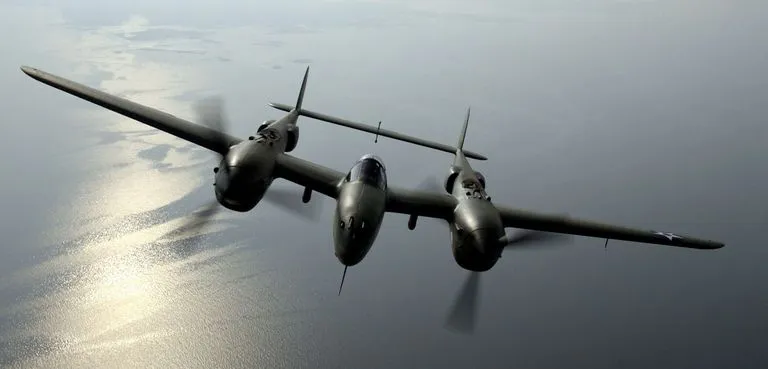The Wreck of a WWII Fighter Plane Will Be Unearthed from a Greenland Glacier
The P-38 fighter is a member of the famed Lost Squadron, which landed on ice caps after running afoul of poor weather in July 1942
/https://tf-cmsv2-smithsonianmag-media.s3.amazonaws.com/filer/cf/d2/cfd2b274-d7f4-4c64-a6b2-5c5ab9331321/army.jpg)
During the summer of 1942, American forces converged on the Pacific en masse, settling in for a long campaign of island hopping and guerrilla warfare. As the United States scored decisive victories over the Japanese at Midway and Guadalcanal, military leaders halfway across the world prepared for the eventual Allied invasion of Europe, building up the number of American troops and aircrafts overseas in a mission codenamed Operation Bolero.
Around 3 a.m. on July 15, 1942, two B-17 bomber planes and six P-38 fighters departed Greenland, unaware that they would soon find themselves entrenched in one of Bolero’s most notorious missions. The pilots planned to refuel in Iceland before continuing on to Great Britain, but about 90 minutes from Reykjavik, they ran into a patch of thick cloud cover. Forced to turn back toward Greenland, the squadron, already running low on fuel, prepared to make an emergency landing on the ice caps below. The first to touch ground, a P-38 manned by Brad McManus, flipped onto its back but left the pilot unharmed. The remaining aircraft quickly followed, leaving the squad alive but trapped on a remote glacier off of Køge Bay in southeastern Greenland.
Nine days after the initial landing, a special Air Force unit arrived at the crash site and escorted the squadron's 25-man crew on a 10-mile trek to the coast, where they were picked up by a Coast Guard cutter. The crew's planes, seemingly consigned to an eternity spent on the glaciers of Greenland, were eventually buried under 250 to 350 feet of ice. The “Lost Squadron,” as the mission was dubbed, proved an apt nickname—at least until 1992, when one of the P-38s, Glacier Girl, was rescued and restored to flying condition. Now, Jay Bennett reports for Popular Mechanics, another P-38, Robert Wilson’s Echo, has been located, leaving just six of the original squadron trapped in unknown enclaves beneath Greenland’s ice caps.
Researchers from the nonprofit Arctic Hot Point Solutions chanced upon Echo while conducting radar searches of the area back in 2011. Earlier this year, they returned, armed with ground-penetrating radar mounted on drones. After pinpointing the plane’s resting place, the team used a heat probe powered by a hot pressure washer system to melt through thick layers of ice and confirm its identity. The probe returned covered in hydraulic oil—a sure sign that it had made contact with the buried aircraft, Tom Metcalfe reports for Live Science.
Moving forward, the researchers plan on physically extracting Echo from its icy prison. According to American Military News’ Cheryl Hinneburg, the team will use large, heated plates to melt through layers of solid ice and tunnel through to the plane. Upon reaching the craft, workers will blast the area with hot water in order to create a cavern large enough to deconstruct it, piece by piece, for restoration.

The first Lost Squadron craft recovered, Glacier Girl, owes much to Atlanta businessmen Pat Epps and Richard Taylor, Karen Jensen writes for Air & Space Magazine. Both aviation fanatics with a keen sense of adventure, the pair co-founded the Greenland Expedition Society in 1981. Determined to locate the mythical members of the Lost Squadron, Epps, Taylor and Kentucky businessman Roy Shoffner dedicated more than a decade to locating the planes and contriving a way to salvage them from under nearly 300 feet of solid ice.
On August 1, 1992, the team’s 11-year efforts culminated in the release of Glacier Girl’s last trapped piece, a 17-foot-long, three-ton section of the plane’s center. And, in October 2002, just over 60 years after its untimely demise, the fighter returned to the skies, roaring to life at air shows and special events across the country.
Thanks to increasingly advanced salvage technology, Echo may take flight alongside Glacier Girl sooner than you’d think. The rescue team also hopes to locate other World War II wrecks, including a U.S. Coast Guard “Duck” aircraft that crashed on the same glacier as the Lost Squadron in November 1942. Three airmen, who were searching for survivors of a downed C-53 Skytrooper, died during the failed rescue attempt. Although five servicemen survived the C-53's initial landing, search-and-rescue attempts proved unsuccessful, and neither the men nor their craft were ever seen again.
Jim Salazar, leader of the search team, told Live Science’s Metcalfe that his crew will begin searching for the missing Duck plane next summer.
“Our intention is to repatriate these men,” Salazar concludes.
/https://tf-cmsv2-smithsonianmag-media.s3.amazonaws.com/accounts/headshot/mellon.png)
/https://tf-cmsv2-smithsonianmag-media.s3.amazonaws.com/accounts/headshot/mellon.png)